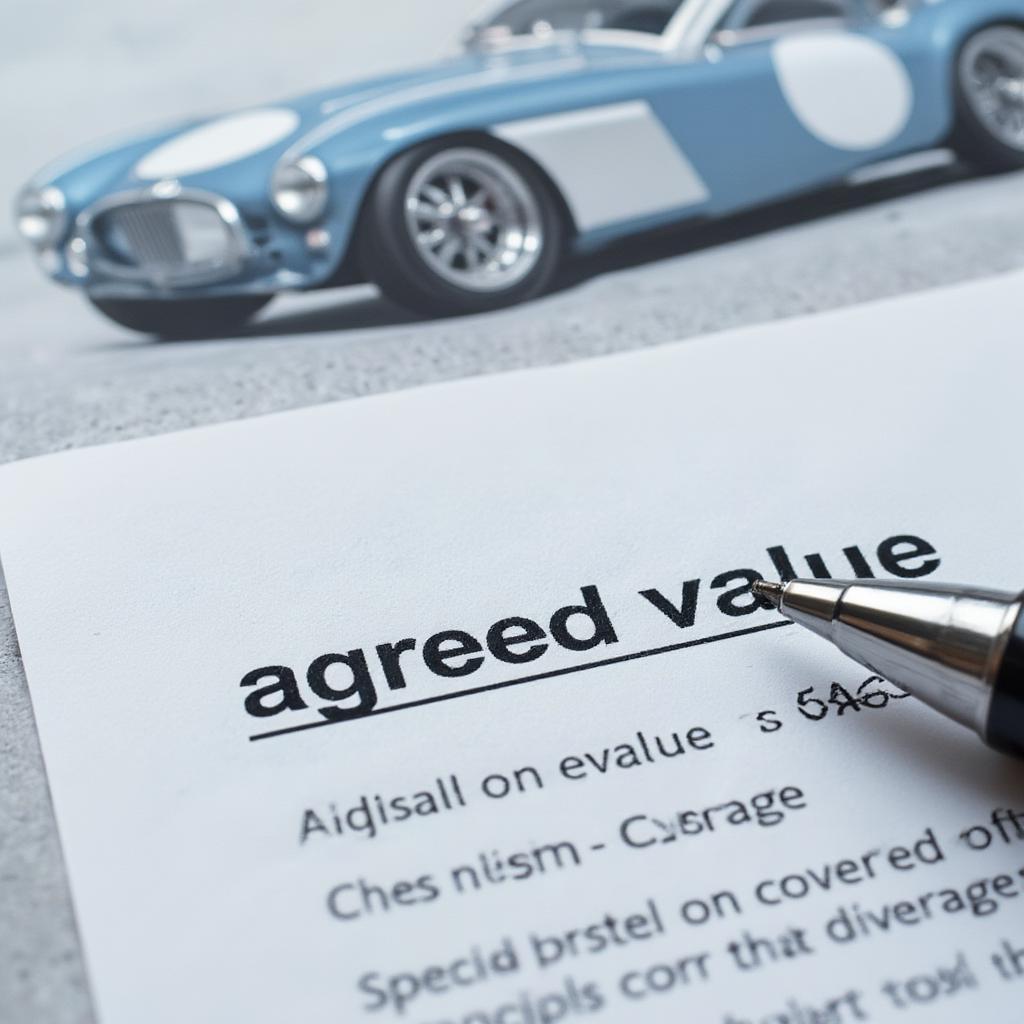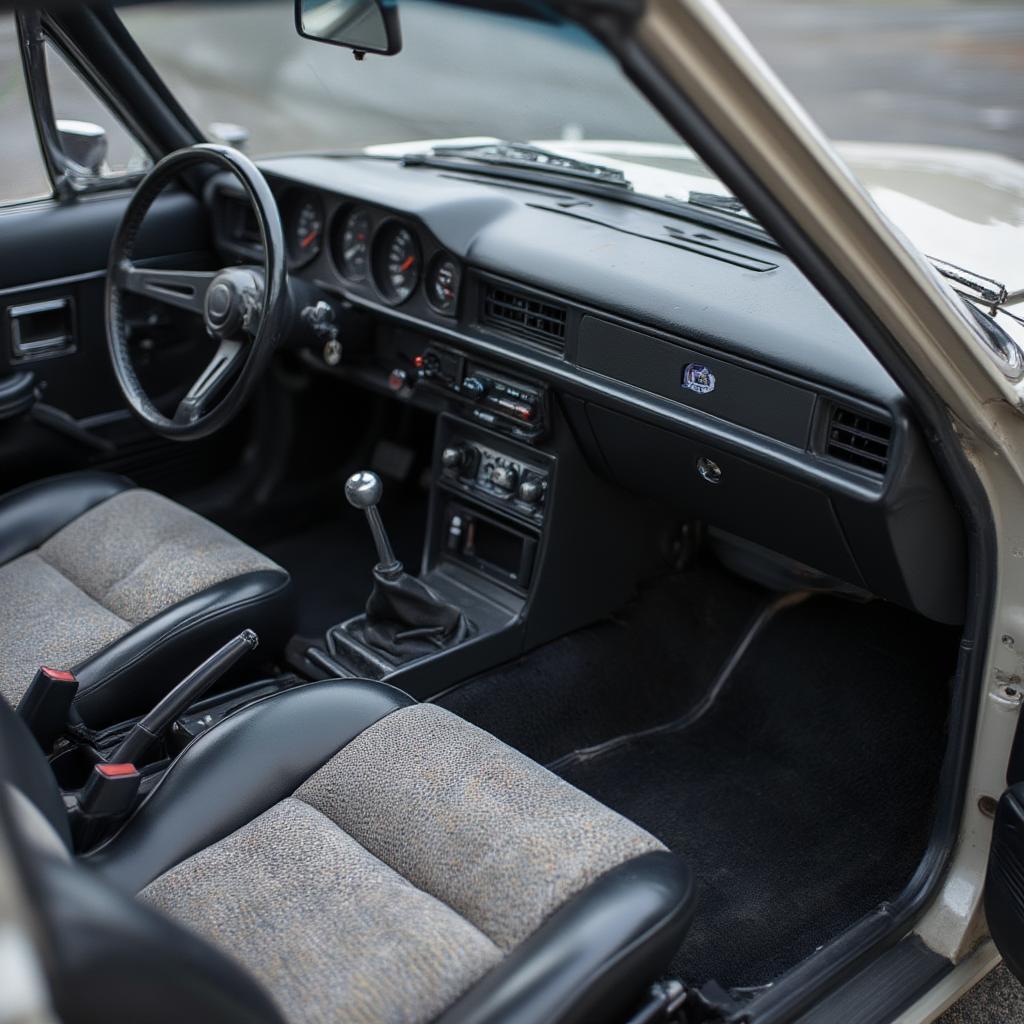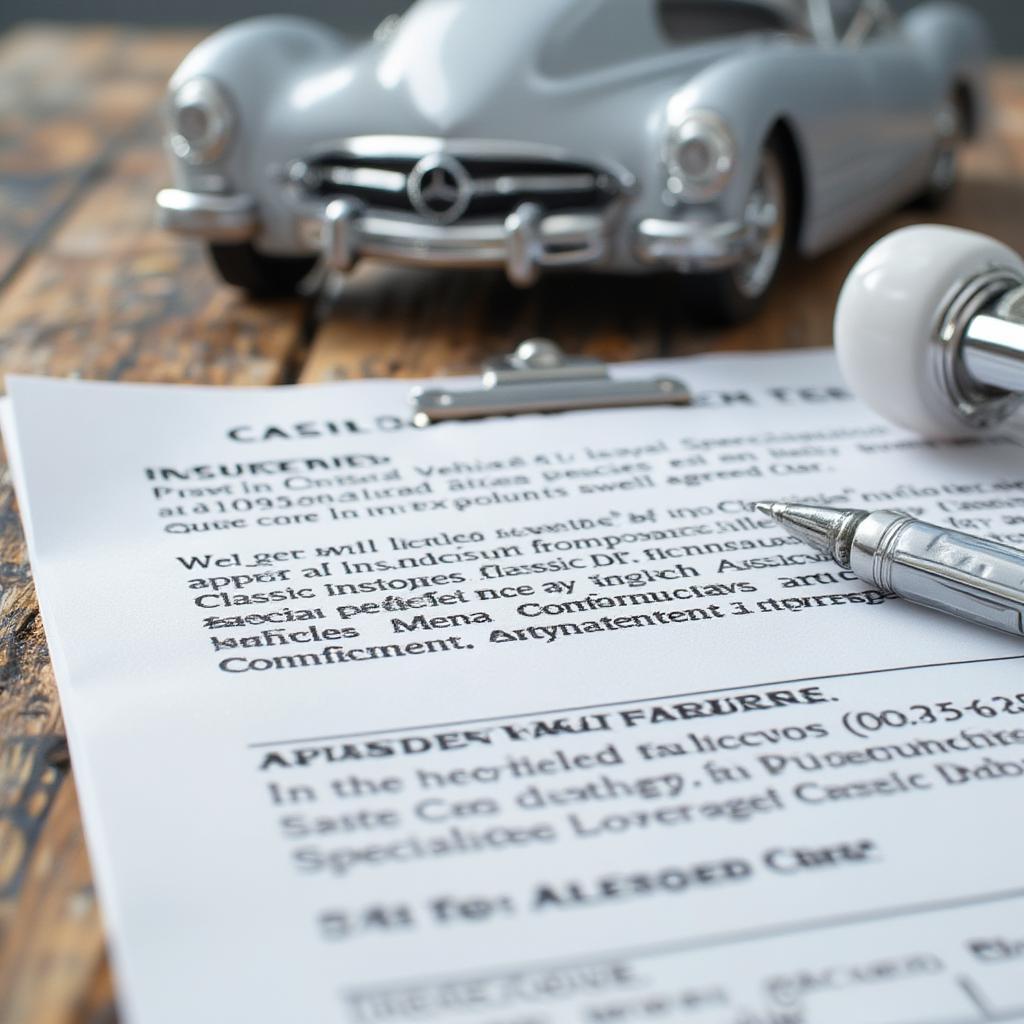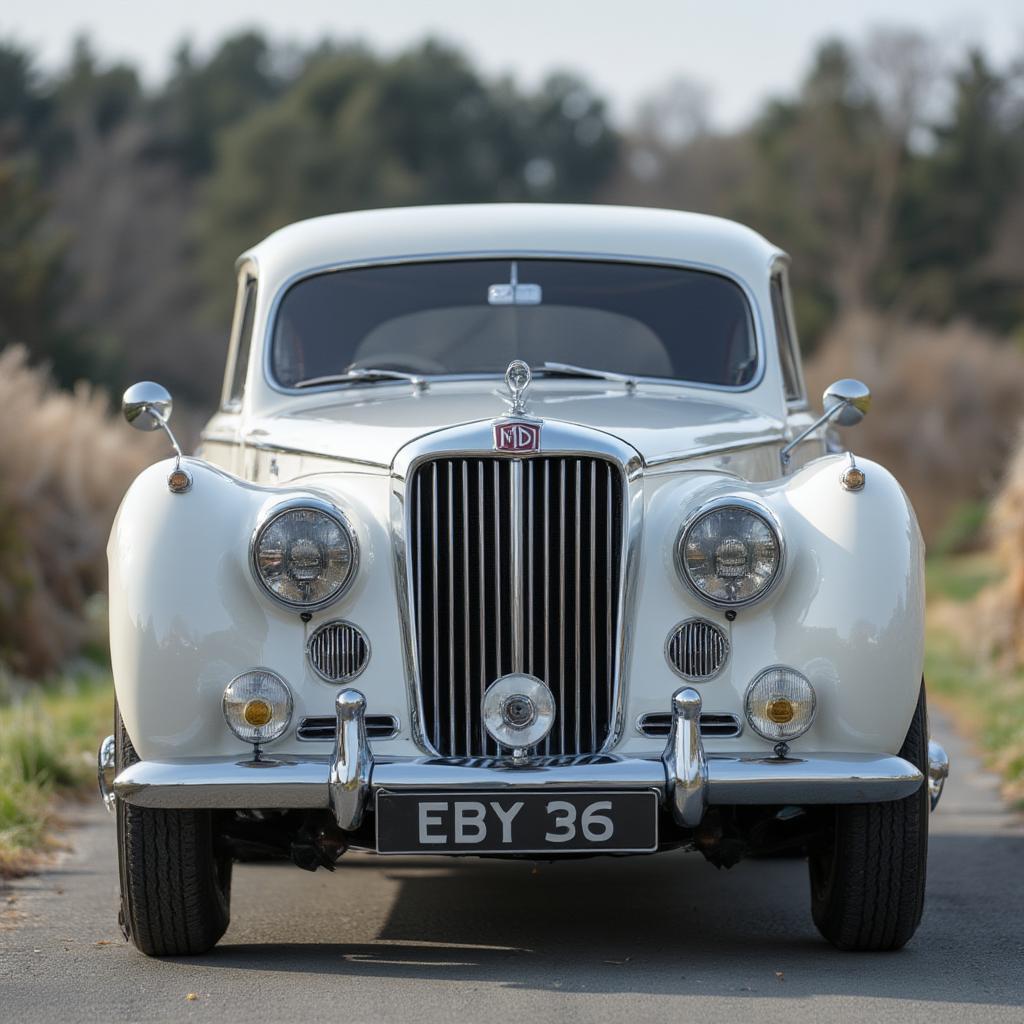Understanding the Insurance Cost on Classic Cars: A Comprehensive Guide
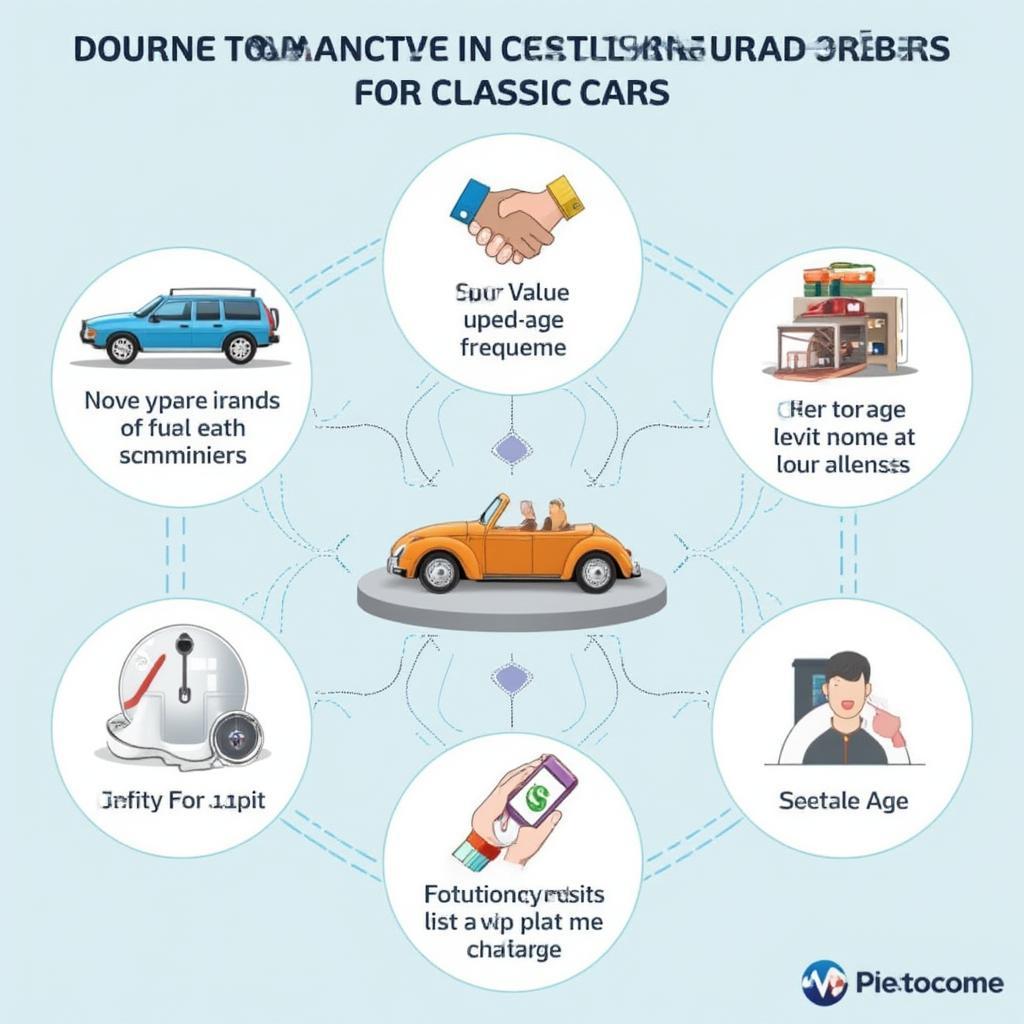
Navigating the world of classic car ownership is exciting, but understanding the Insurance Cost On Classic Cars is crucial. It’s not as straightforward as insuring a modern vehicle; many factors contribute to the premium you’ll pay. This guide will delve into the intricacies of classic car insurance, helping you make informed decisions.
Why is Classic Car Insurance Different?
Unlike everyday cars, classic cars often appreciate in value, have unique usage patterns, and require specialized care. These factors mean standard car insurance policies don’t usually fit the bill. Classic car insurance takes into account these specific attributes. For example, a classic car is generally driven less often and is usually stored securely. These reduced risks are reflected in the policies offered by insurers specializing in classic vehicles.

Key Factors Influencing Insurance Cost on Classic Cars
Several elements come into play when calculating your insurance premium. Here’s a breakdown:
- Vehicle Value: The most significant factor is the car’s agreed value. This isn’t based on a depreciation schedule but on its current market value, which could be significantly higher than what was originally paid for it. A valuation from a qualified appraiser may be required.
- Vehicle Age and Rarity: Older and rarer models often command higher insurance premiums due to limited availability of parts and increased restoration costs. The uniqueness of the car contributes to the difficulty of repair or replacement.
- Usage: Insurance costs are affected by how often you drive your classic car. If you primarily use it for weekend shows or special events, your premium will likely be lower compared to someone who uses it more regularly.
- Storage: Secure storage significantly impacts insurance costs. Keeping your classic car in a locked garage or a secure storage facility reduces the risk of theft and damage, resulting in lower premiums.
- Driver Profile: Your age, driving history, and experience all play a role. Experienced drivers with a clean record typically pay less than younger drivers or those with a history of accidents.
- Location: Where you live also matters, with some areas having higher rates due to higher crime rates or greater likelihood of natural disasters.
- Policy Type: The type of coverage you choose, whether basic liability or comprehensive coverage, will influence the premium. Opting for full coverage will cost more, but it provides greater protection.
Types of Classic Car Insurance Policies
Understanding the different coverage options is essential. Here are the most common types:
- Agreed Value Policy: This policy ensures that you receive the agreed-upon value of the car if it’s declared a total loss. It’s vital for classic cars, as standard policies might depreciate their value.
- Liability Coverage: This covers damages to others if you’re at fault in an accident. It’s a legal requirement, and the minimum coverage varies by location.
- Comprehensive Coverage: This protects your vehicle from theft, vandalism, and damage from natural disasters. It’s crucial for high-value classic cars.
- Collision Coverage: This covers damage to your vehicle resulting from a collision. This is usually optional but recommended for many classic cars.
- Spare Parts Coverage: Some policies include coverage for hard-to-find spare parts, a significant benefit for classic car owners.
“When determining the insurance cost on classic cars, never underestimate the importance of an accurate valuation. It’s the foundation of the agreed-value policy,” says Amelia Sterling, a seasoned classic car insurance specialist at Sterling Insurance Group.
How to Reduce Your Insurance Cost on Classic Cars
While classic car insurance can be pricier than standard car insurance, there are ways to reduce your costs:
- Secure Storage: Investing in secure storage like a locked garage or facility can significantly lower your premiums.
- Limited Usage: Agree to drive your classic car less often, limiting it to shows, parades, or weekend drives.
- Join a Car Club: Membership in a classic car club can lead to discounts with some insurance providers.
- Multi-Car Policy: Bundling your classic car insurance with other policies can often result in savings.
- Increase Deductible: Choosing a higher deductible can reduce your monthly premium.
- Shop Around: Get quotes from several specialized classic car insurance providers to find the best deal.
- Install Security Features: Installing security devices like alarms or GPS trackers can lower your rates.
- Maintain a Clean Driving Record: A good driving history typically means lower premiums.
- Regular Appraisal: Ensure you have the most accurate appraisal every two or three years. This could reveal that your vehicle is worth less than previously thought, thus reducing your insurance costs.
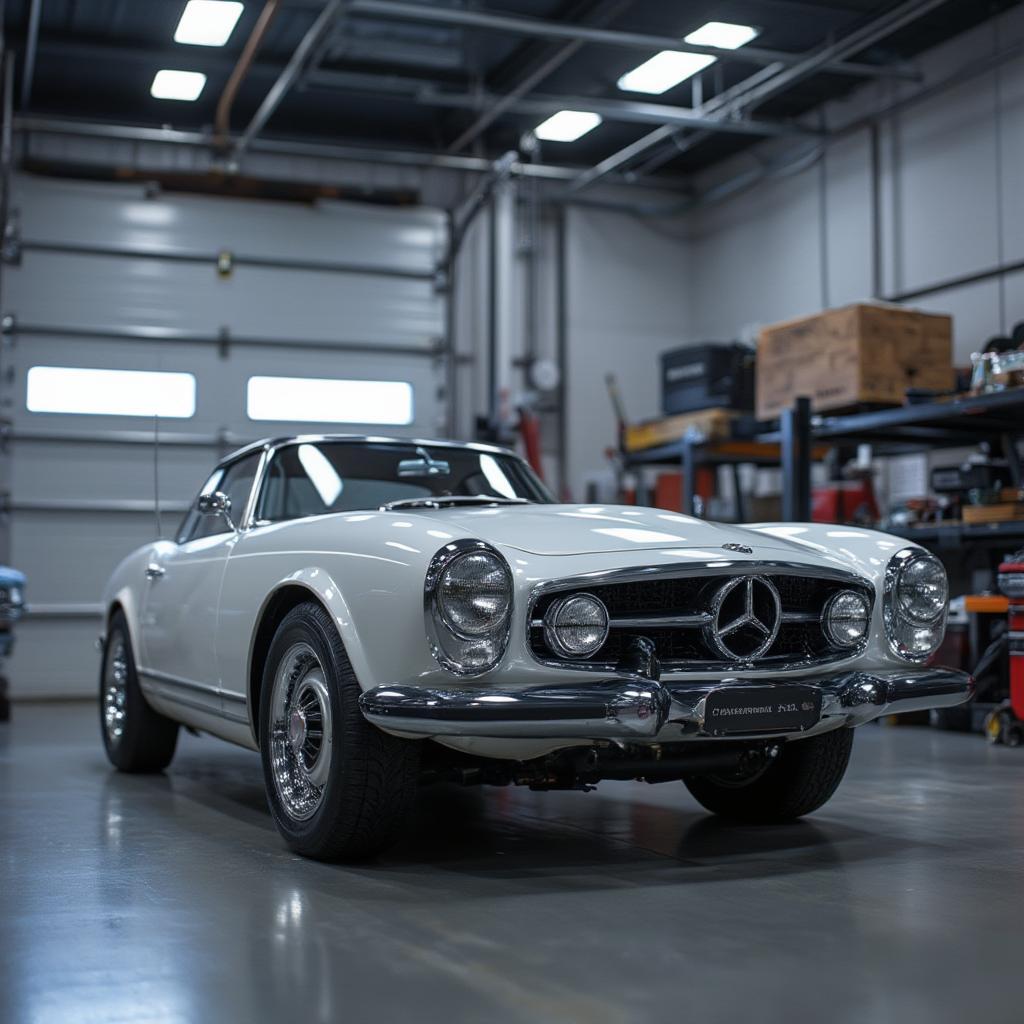
Finding the Right Insurer for Your Classic Car
Choosing the right insurer is as important as selecting the correct policy. Here’s what to consider:
- Specialization: Look for insurers that specialize in classic cars and understand the unique challenges of owning one.
- Reputation: Check the insurer’s reputation and read reviews from other classic car owners.
- Agreed Value Policy: Ensure the insurer offers agreed-value policies that protect your investment.
- Coverage Options: Review the coverage options and ensure they meet your specific needs.
- Customer Service: Look for an insurer that provides excellent customer service and is accessible when needed.
- Financial Stability: Choose an insurer with a strong financial record and the ability to pay out claims.
For example, Peter Taylor Classic Car Insurance is a well-known name that you might find suitable. They have a great deal of experience in the space and are generally well reviewed by classic car enthusiasts. It’s always wise to explore all of your options before making a final choice.
How much does classic car insurance really cost?
The average insurance cost on classic cars can range anywhere from several hundred to a few thousand dollars annually. This range reflects the many factors that come into play, as discussed earlier. It’s not unusual to find that some companies offering classic car insurance may have lower rates or more specific coverages that may suit you better than a general car insurance company. Getting multiple quotes is always recommended.
What is considered a ‘classic’ car for insurance purposes?
Generally, a classic car is considered to be 25 years old or older. However, some insurers may have different definitions, so it’s essential to clarify this point when seeking a quote. It’s not always just about the age, but also the vehicle’s uniqueness, historical value, and condition. Certain vehicles that are highly desirable or have an extremely limited production run may also fall into this category. You can find many classic car auctions this weekend where enthusiasts will show and sell these vehicles.
“The key to getting a good deal on classic car insurance is to understand what makes your car unique and to look for an insurer that recognizes those qualities,” adds Johnathan Reed, a classic car enthusiast and expert.
Is it cheaper to insure a classic car?
Often, it can be cheaper to insure a classic car than a modern vehicle. This is primarily because they are usually driven less frequently and stored with more care. However, this may only be true if you agree to limited usage and keep the car in secure storage. The cost of potential replacement or repair is often higher for a classic vehicle due to the cost of specialist labor or hard-to-find components.
How does agreed value work?
An agreed value policy means that in the event of a total loss, the insurer will pay you the agreed-upon value of your car, as determined during the initial appraisal. This policy is vital for classic cars that can increase in value and helps prevent disputes about the car’s worth in the event of a claim. This is the most sensible method of insuring a classic vehicle.
Can I drive my classic car every day?
While you can use a classic car for daily driving, it may affect your insurance costs. Insurers often offer lower rates for vehicles that are primarily driven for recreational or show purposes and aren’t being used for daily commutes. You might consider having another vehicle available for daily driving purposes, particularly if you want to maintain classic vehicle’s low rate.
What if I need to source parts for my classic vehicle?
Some specialized insurers offer coverage for difficult to source parts. These policies acknowledge that sourcing original parts for a classic car can be expensive and challenging. It’s worth exploring whether this type of coverage is offered by the insurer.
Where can I find out more about specialist classic car providers?
There are many websites out there that can provide you with the kind of information you are looking for, including some specific details on some vehicles like the 1964 Ford Fairlane 500 for sale and others like it. Always remember to fully research any company before making a decision about which insurer to go with.
Conclusion
Understanding the insurance cost on classic cars is vital for any enthusiast. By considering the factors that influence premiums, exploring your coverage options, and choosing the right insurer, you can ensure that your treasured vehicle is properly protected without breaking the bank. Always compare quotes from multiple insurers and make sure that you understand all terms and conditions before making a final decision. Being a part of the classic car community is extremely rewarding, so be sure you have all the correct coverages in place before driving.

